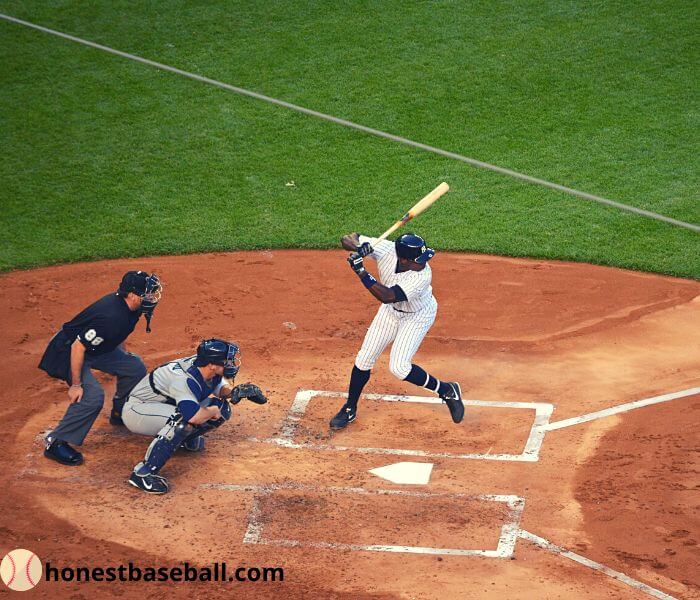Bunting is one of those skills in baseball that doesn’t always grab the headlines, but when done right, it can completely change the course of a game. So, what exactly is bunting? In simple terms, bunting is when the batter holds the bat still to “catch” the ball with the bat, rather than swinging it. The goal isn’t to hit a home run, but rather to softly tap the ball and send it rolling into play.
Though bunting might seem like a less glamorous part of the game, it plays a crucial strategic role. The purpose of bunting is often to advance a baserunner or catch the defense off-guard. It’s a tool that relies on precision, timing, and an understanding of the game’s strategic situation. In today’s power-heavy game, bunting has taken a backseat, but it’s far from obsolete. Some managers still believe that bunting is essential, especially in close games or when trying to squeeze out an extra run.
As a former baseball player and a coach, I have made my students practice bunting with the same importance as I did with other baseball drills. And trust me, learning baseball bunting has come in handy many times in my baseball career.
If you are wondering how you can acquire the basic knowledge of bunting a baseball, you have come to the right place. We will discuss the perfect way to bunt ball and when and how to do it.

What is Bunting a Baseball?
Bunting a baseball means making soft contact with the pitch by the bat by slightly tapping the ball with it. The main purpose is to hit the pitch hard enough that it lands in the fair territory away from the fielders.
When you attempt a bunt, you do not swing the bat as you would normally do. You will hold the bat at a certain angle on home plate and hit the ball. This makes it difficult for the defensive players to make a quick move.
If you can successfully hit a bunt, the ball will not go further than 20 feet. When this happens, the fielder needs to move from their position to field the ball, which gives the runner enough time to steal a base.
However, baseball bunting can be done for other reasons as well. A proper bunting technique is a selfless move that is executed to earn a run for the team.
There are several techniques to achieve a baseball bunt. Below we will discuss further how to bunt in baseball, proper bunting technique, bunt drills, and more. Continue reading to cover the topic in depth.
Want to know more about baseball drills? Take a look at this article- 7 Youth Baseball Hitting Drills – Hit To Stars Like A Pro!
The Purpose of a Bunt
At first glance, it might seem odd to intentionally make contact with the ball in a way that minimizes how far it goes, but there’s a lot of strategy involved in bunting.
One of the primary purposes of a bunt is to advance a baserunner without necessarily trying to get a hit yourself. This type of play is known as a sacrifice bunt.
The batter “sacrifices” their chance to get on base to ensure a teammate can move to the next base, typically from first to second or second to third. It’s a calculated tradeoff where an out is made, but the team gains a strategic advantage.
Another key reason to bunt is to catch the defense by surprise, often called a drag bunt or push bunt. In this situation, the batter is aiming to get on base by placing the ball in a difficult spot for the fielders to reach quickly.
This tactic is typically used by faster players who can hustle down the line and beat out the throw to first. It’s a great way to put pressure on the defense, as it forces them to move quickly and make accurate throws.
Additionally, bunting can be a powerful tool in squeeze plays, particularly the suicide squeeze and safety squeeze. These bunts occur when there’s a runner on third base, and the batter bunts the ball to allow the runner to score.
In a suicide squeeze, the runner starts running towards home plate as the pitch is delivered, requiring perfect timing to avoid getting tagged out. In a safety squeeze, the runner waits until the ball is bunted before breaking for home, making it a slightly safer but still high-risk play.
When to Bunt in Baseball?
Some coaches I know to frown upon bunting a baseball and do not think it can be an important trick to advance the game. However, baseball bunting can become vital in order to win a game.
For example, if the runner is in second base with no outs and the hitter is struggling to hit on the right side to advance the runner to third, then bunting is the only option.
Practicing bunts in baseball is equally important for the players, which can help them in crucial times. You can catch your defense team off-guard by executing a good bunt. However, if bunts are not performed correctly, it can negatively impact your team.
Types of Bunting Techniques
As discussed above, bunting a baseball has some different categories, and each has a different motive. Now that you know how to bunt in baseball and what is bunting a baseball let’s see what are the different bunts and fundamentals of bunting in baseball-
1. Sacrifice Bunt
The sacrifice bunt is one of the most common bunts in baseball. It is executed to get the runner over to the second or third base. You have to try and bunt the ball anywhere down the lines inside the fair territory. But keep in mind never to bunt the ball back at the pitcher.
In a sacrifice bunt, you can prepare yourself before the pitcher throws the ball. As this bunt does not need the ball to travel far, not much movement or force is needed.
2. Push Bunt
Push bunts have to be hit firmly to the second baseman. Unlike the sacrifice bunt, here you have to push the ball away from your position into the second base. Here you can square around later than the sacrifice bunt since you want the ball to reach the second base.

3. Drag Bunt
The motive of the drag bunt is to try and deceive the infielders. And to perfectly carry it out, you have to square around very late, unlike the other two bunts. Show the pitcher you are making a proper hit and bunting it when they are least expecting it.
You have to pick a line before hitting a drag bunt and strike hard enough so that the ball reaches right where you aimed for it. Here you can either hit a perfect bunt or a foul bunt. No matter what you do, always try to hit the ball three-quarters away from the pitcher.
4. Squeeze Bunt
The squeeze bunt is known as the most fun bunt in baseball. Here the batter will square around a little after the pitcher gathers his momentum and hits the ball anywhere in the fair territory, preferably away from the pitcher.
By mastering these different bunting techniques, players can bring an extra layer of strategy and unpredictability to their game.
How to Bunt in Baseball?
If you are planning to play on the college team or consider yourself a professional-level player, you have to know how to bunt in baseball.
Although it is not necessary, if you know the proper bunting technique, you will be able to execute the move when your team requires it. So without further ado, let’s see how to bunt in baseball-
Step 1- Feet Position
Pivot your feet away from the home plate and face second base. Remember to never step onto the home plate, and if you step on the home plate and hit the ball, you will be out of the game instantly.
Additionally, if you are directly facing the pitcher, it puts you in a defenseless position. So if the pitcher decides to throw a fastball outside the spot, it can hit you directly instead of the bat.
You can prepare and hold your bunting position before the pitcher arrives. Showing late while bunting is not a necessary step. There is no harm in showing the opposing team that you are trying to exchange an out to move the runner.
Step 2- Set Angle
Set your bat horizontally from side to side, balancing on both your hands, and hold it steadily. Depending on the baseline you are aiming for, the angle of your bat will change slightly. Again, you do not have to push hard or swing your bat to get a perfect baseball bunt.
To aim for the third base line, keep the head of your bat at an angle where it points towards the first base. Keep the knob held from the end on your other hand without imposing any force on it.
If you are aiming for the first base, keep the knob of your bat facing perpendicular parallel to the third base. If you stand too close to the batter’s box, move slightly forward to get more room to bunt in front of the batter’s box.

Step 3- Strike
Start from the top of the strike zone. If your pitcher throws a pitch above your hands, you have to pull back your body with the bat and let the ball go without bunting it.
If you are thrown a low pitch, do not position the bat lower or move the bat; rather, kneel down with the bat in a squat position and act like you are catching the ball with the bat.
I have seen players trying to push or impose force onto the bat while striking. Well, it will not benefit you if you are trying to bunt a ball. Move your body with the bat and act like you are catching the ball, and smoothly touch the ball with the bat.
Step 4- Grip
The way you grip a bat is also important for bunting a baseball. Do not hold it too hard but use your index finger and thumb and hold the bat as if you are pinching it. Keep your other three fingers folded behind the bat.
Do not grip the bat with all five fingers because if you miss the ball, the ball will hit directly at your fingers, and you will suffer a huge accident.
Nevertheless, if you are willing to know how to hold a baseball bat for maximum speed, here is an article to help- How to Hold a Baseball Bat for Maximum Speed and Power?
Rules Regarding Bunting in Baseball
Bunting comes with its own set of rules, which vary depending on the level of play. It’s important to understand these rules to avoid making costly mistakes that could hurt your team.
1. Foul Bunt on Third Strike
One of the most common rules in bunting is the foul bunt on a third strike. If a batter bunts the ball foul on the third strike, they are automatically out. This rule discourages reckless bunting attempts when a player is behind in the count. It forces the batter to be precise and controlled with their bunt, especially when facing two strikes.
2. Bunting in Foul Territory
If a bunted ball lands in foul territory and stays there before passing first or third base, it is ruled a foul ball. However, if the ball is bunted and rolls foul after passing first or third base, it’s considered a fair ball. Bunting requires precision, and controlling the ball’s placement is crucial to avoid easy outs.
3. Bunting Into a Double Play
One of the risks of bunting poorly is the possibility of bunting into a double play. This can happen if the ball is bunted too hard directly at a fielder or if the defense reacts quickly. In these situations, the defense can field the ball, throw out the lead runner, and potentially get the batter out at first as well.
Defensive Strategies Against Bunting

While bunting can be a great offensive tool, defenses have evolved ways to counter this strategy. Depending on the type of bunt, defenders must be quick on their feet and ready to make rapid decisions. Here are some common defensive strategies used against bunts:
Charging Infielders
One of the most standard defensive tactics against a bunt is having the corner infielders — the first and third basemen — charge toward the plate as soon as the batter squares up to bunt.
By charging, these players can field the ball more quickly and throw to first base before the batter reaches it. The pitcher also plays a key role in covering ground, especially when a bunt is placed between the mound and home plate.
Bunt Coverage by Fielders
Defensive bunt coverage relies heavily on communication and positioning. Here’s how it generally works:
- First Baseman: Responsible for fielding bunts down the first base line or receiving throws from other fielders.
- Third Baseman: Fields bunts toward third base and must decide whether to throw to first or hold onto the ball if there’s a runner heading to third.
- Pitcher: Covers the middle of the infield and should be ready to make plays on any bunted ball near the mound.
- Catcher: The catcher plays an important role, particularly on squeeze plays. If the bunt is popped up or mishit, the catcher needs to react quickly to prevent the runner from scoring.
Shifted Defense for Advanced Players
Against known bunters or in critical situations, teams may employ shifted defenses. This might include bringing the infielders closer to the plate, positioning the pitcher in a more aggressive spot, or even pulling an outfielder in to help defend a possible squeeze play.
Bunting drills Baseball
Here are some bunting drills for you to become a better hitter-
- Practice bunting a baseball first with a glove. Since bunting is basically catching the ball with the bat, you need to practice first with a glove in your dominant hand.
- After you think that you have excelled at catching practice, continue with your practice, but this time including a bat. Rest the barrel of your bat in your glove and follow the same catching form as your bat.
- The final drill is to practice without the glove on. Keeping the same catching technique, square around your bat and pretend you are catching the ball with your bat.
- You can practice with a Pitching Machine to get maximum productivity. You will not have to rely on anyone to keep your practice sessions going.
So to summarize the drills for you, what you have to do is-
- Practice catching with a glove,
- Add the bat and hold it with the barrel in the same hand with the glove on,
- Remove the glove and practice baseball bunting with your bat.
The Decline and Resurgence of Bunting
Over the years, the use of bunting in Major League Baseball (MLB) has seen a significant decline. The rise of analytics, such as sabermetrics, has largely contributed to this shift.
Data-driven approaches in modern baseball suggest that giving up an out through a sacrifice bunt often isn’t worth the potential benefits. Home runs and extra-base hits have become more valuable, and teams tend to prioritize slugging over small-ball strategies like bunting.
Decline in the Use of Bunting
The philosophy behind this change is simple: giving up an out to move a runner is less efficient than swinging for the fences. With the increased focus on on-base percentage (OBP) and slugging percentage (SLG), bunting has become less frequent. In the 1970s and 80s, it was common to see teams use bunts as part of their overall strategy.
Today, however, the number of bunts in MLB has significantly dropped. According to recent statistics, sacrifice bunts have been at an all-time low in the past few seasons, with teams opting for more aggressive offensive plays like stolen bases and home runs.
The Resurgence of Bunting in Key Situations
While bunting is no longer the go-to strategy, it hasn’t disappeared completely. There are still moments when bunting is the best option, especially in close, low-scoring games where advancing a runner can be the difference between winning and losing.
Playoff games or games involving ace pitchers, where runs are scarce, often see the return of small-ball tactics like bunting. For example, during the 2022 MLB season, bunting was used in extra innings, particularly when a runner was placed on second base under the new extra-innings rule.
Another area where bunting has seen a slight resurgence is with specific players who have speed or are known for their contact hitting. These players are more likely to use a drag or push bunt to surprise the defense and get on base.
Players like Dee Strange-Gordon and Billy Hamilton, known for their speed, have utilized bunting to take advantage of defenses that are playing back, anticipating a traditional swing.
Bunting in Youth Baseball

Bunting in youth baseball is equally as important as in an MLB match. Bunting a baseball will do the same tricks, and it can help your team gain benefit. If you are a player yourself, then practice bunting baseball from the early days of your career.
If you are a coach, help your students capture the fundamentals of bunting from a young age. Like every other skill, bunts in baseball will be polished with hard work and practice.
Other than bunting, if you want to know other important baseball skills, here is an article to help- How To Play Baseball | Everything You Need To Know
Famous Bunting Moments in Baseball History
Throughout baseball’s rich history, there have been several iconic moments where a well-placed bunt changed the outcome of a game. Let’s take a look at some of these legendary bunting moments:
1. Eddie Collins’ Bunt in the 1917 World Series
Eddie Collins, a Hall of Fame player, executed a perfect bunt during the 1917 World Series that helped his Chicago White Sox secure a victory. His well-placed bunt allowed a runner to advance, eventually leading to a crucial run in a low-scoring game. It’s a classic example of how small-ball strategies like bunting can win championships.
2. The Perfect Squeeze Play in the 1997 NLCS
During the 1997 National League Championship Series (NLCS), the Florida Marlins pulled off a perfectly executed squeeze play. Craig Counsell laid down a bunt that allowed the Marlins to score the winning run, sending them to the World Series, which they ultimately won. This moment has become one of the most memorable squeeze plays in MLB history.
3. Brett Butler’s Bunting Mastery
Brett Butler was one of the most well-known bunters in the history of baseball. He used the bunt as a weapon throughout his career, accumulating over 180 bunt singles. In 1992, Butler’s bunting skills were on full display when he led the league with 13 bunt hits, using his speed and precision to place the ball perfectly down the third baseline. His ability to bunt made him one of the toughest players to defend against.
These moments show that while bunting may not be the flashiest part of baseball, it can be just as impactful as a home run or a strikeout. A well-executed bunt, especially in high-pressure situations, can change the course of a game and even a season.
Frequently Asked Questions
Q. Is Bunting still allowed in Baseball in 2024?
A: Yes, bunting is still allowed in Baseball as of September 2024. Until April 2024, there had been 38 sacrifice bunts recorded.
Q. When can you Not Bunt in Baseball?
A: Although there is no prohibition on bunting in baseball, however, if there are two outs in a single inning, bunting is not appreciated at such moments.
Q. What is the Bunting Rule?
A: You do not strike the ball to make a hit in bunting. Bunting requires tapping the ball with the bat without swinging so that the ball lands within the infield.
Final Word
Whether in MLB or in college baseball, bunting a baseball can save the game at any required moment. Sacrificing for the team so that the team can advance in the scoreboard is all a good bunting will do.
No matter how much the technique is frowned upon, there is no dispute over the fact that bunting has been saving teams in crucial moments. To build a complete team, the players have to know and perceive all the baseball techniques, and the rule is indifferent to bunting.
We hope our take on Bunting in Baseball will be helpful to you. You can check out our other
articles for in-depth knowledge on other Baseball topics.
8 Benefits of Playing Baseball | Improve Your Mental And Physical Health
Baserunning in Baseball| Facts, Techniques, and Tips
How to Clean a Baseball Bat? | Clean Your Bat Within a Minute

Hello everyone. My name is Jason Butler, and I live in California, America. I was a professional AAA Minor League Baseball player. I lost my chance of playing MLB for injury issues, but I did not lose my love for baseball. I attended the coaching training program and am now working as a coach in a small school in San Diego.
I always love to share my experience and knowledge if that can help you. Play baseball, and stay fit.
